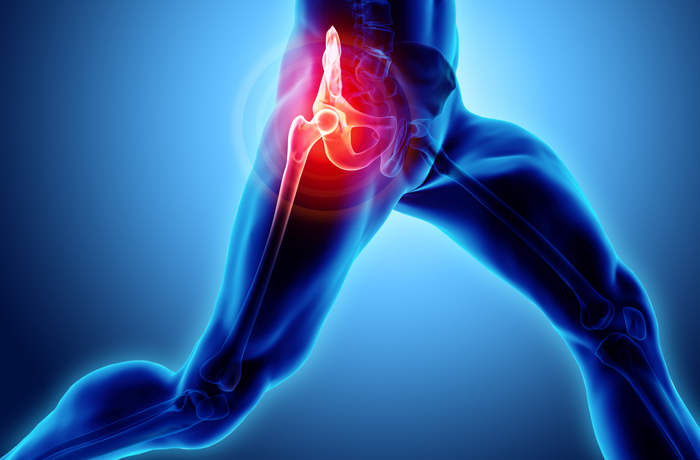Hip Arthroscopy Surgery in Kondapur, Hyderabad
Hip arthroscopy is a procedure in which doctors inspect the hip joint for problems without removing any skin or soft tissues.
What is Hip Arthroscopy?
Hip arthroscopy is a procedure that involves inserting an arthroscope into the hip joint through an incision, to examine the hip joint.

Why is Hip Arthroscopy Done?
When non-surgical therapies such as rest, medicines, injections, and physical therapy have failed to relieve significant pain and inflammation in the hip joint, hip arthroscopy is performed at Apollo Kondapur. Pain and inflammation in the hip joint may occur due to various conditions, such as;
- Synovitis – Synovitis is a condition wherein the tissue around the hip joint is inflamed.
- Snapping hip syndrome – Snapping hip syndrome is a condition wherein the tendons brush against the exterior of the joint, causing damage to it due to repeated rubbing.
- Dysplasia – Dysplasia is a condition wherein the hip socket is quite shallow, which puts a great deal of strain on the labrum, to keep the femoral head in its socket. The labrum becomes more prone to tears as a result of dysplasia.
- Femorocetabular impingement (FAI) – FAI is a condition wherein bone overgrowth, called bone spurs, develops along the acetabulum or on the femoral head. These bone spurs can cause injury to the tissues in the hip joint, during movement.
- Cartilage or bone fragments becoming loose and moving about the hip joint
- Infection in the hip joint
How is Hip Arthroscopy Done?
In hip arthroscopy, the patient will be given general or regional anaesthesia first. Next, the surgeon will place the patient’s leg such that their hip is pushed away from its socket. This allows the surgeon to make an incision and introduce instruments through it, to examine the hip joint and identify the problem.
The surgeon will insert an arthroscope through an incision. It is a device with a narrow tube that has a video camera attached to one of its ends. The images from this camera are projected on a screen that the surgeon can view. Through this, the surgeon looks around the hip joint and pinpoints the problem areas. Then, they insert other special instruments through other incisions to repair the damage such as trimming bone spurs, repairing torn cartilage, or removing inflamed synovial tissue.
What Happens After Hip Arthroscopy?
Patients will be sent to a recovery room after their hip arthroscopy. They will be monitored for 1 to 2 hours. After surgery, patients may feel pain and discomfort, for which, the doctor will prescribe pain medicine. Most patients can usually go home on the same day as their surgery. They may need crutches until they are no longer limping. If the operation was more complicated, crutches may be necessary for 1 to 2 months after hip arthroscopy. To regain mobility and strength, they will also have to perform certain exercises as recommended by a physical therapist.
Request an appointment at Apollo Spectra Hospitals, Kondapur
Call 1860-500-2244 to book an appointment
What are the Complications Associated with Hip Arthroscopy?
Hip arthroscopy is generally a safe procedure. However, in rare cases, complications such as damage to surrounding blood vessels or nerves as well as to the joint can occur during hip arthroscopy. Due to the traction procedure, patients may also experience some numbness, which is temporary. There’s also a chance of blood clots in the leg or infection in the hip joint.
Most people return to their daily activities without limitations, after their hip arthroscopy surgery. The type of hip injury determines how quickly a patient will recover. To protect the hip joint, some people may need to make certain lifestyle changes such as engaging in low-impact exercises like cycling or swimming. If the hip damage in some cases is extremely severe, hip arthroscopy may fail to reverse it.
Hip arthroscopy can be performed to treat several conditions, including;
- Femoral head abnormalities
- Acetabulum abnormalities
- Bone cysts
- Labral tears
- Ligamentum Teres tears
- Femoroacetabular impingement
- Loose bodies
- Osteonecrosis
- Adhesive capsulitis
- Iliopsoas tendinitis
- Synovial disease
- Cartilage damage
- Trochanteric bursitis
- Joint sepsis
Usually, people with FAI, hip dysplasia, labral tear, loose bodies, or other conditions causing hip pain and discomfort are good candidates for hip arthroscopy. They experience severe pain and decreased range of function and mobility, which interferes with their daily lives. People with arthritis aren’t good candidates for hip arthroscopy.
There are various advantages of hip arthroscopy, including –
- Less tissue damage
- Faster recovery
- Less pain after surgery
- Shorter hospital stay
Symptoms
Our Top Specialities
NOTICE BOARD
CONTACT US
CONTACT US
 Book Appointment
Book Appointment


.svg)
.svg)
.svg)
.svg)








